
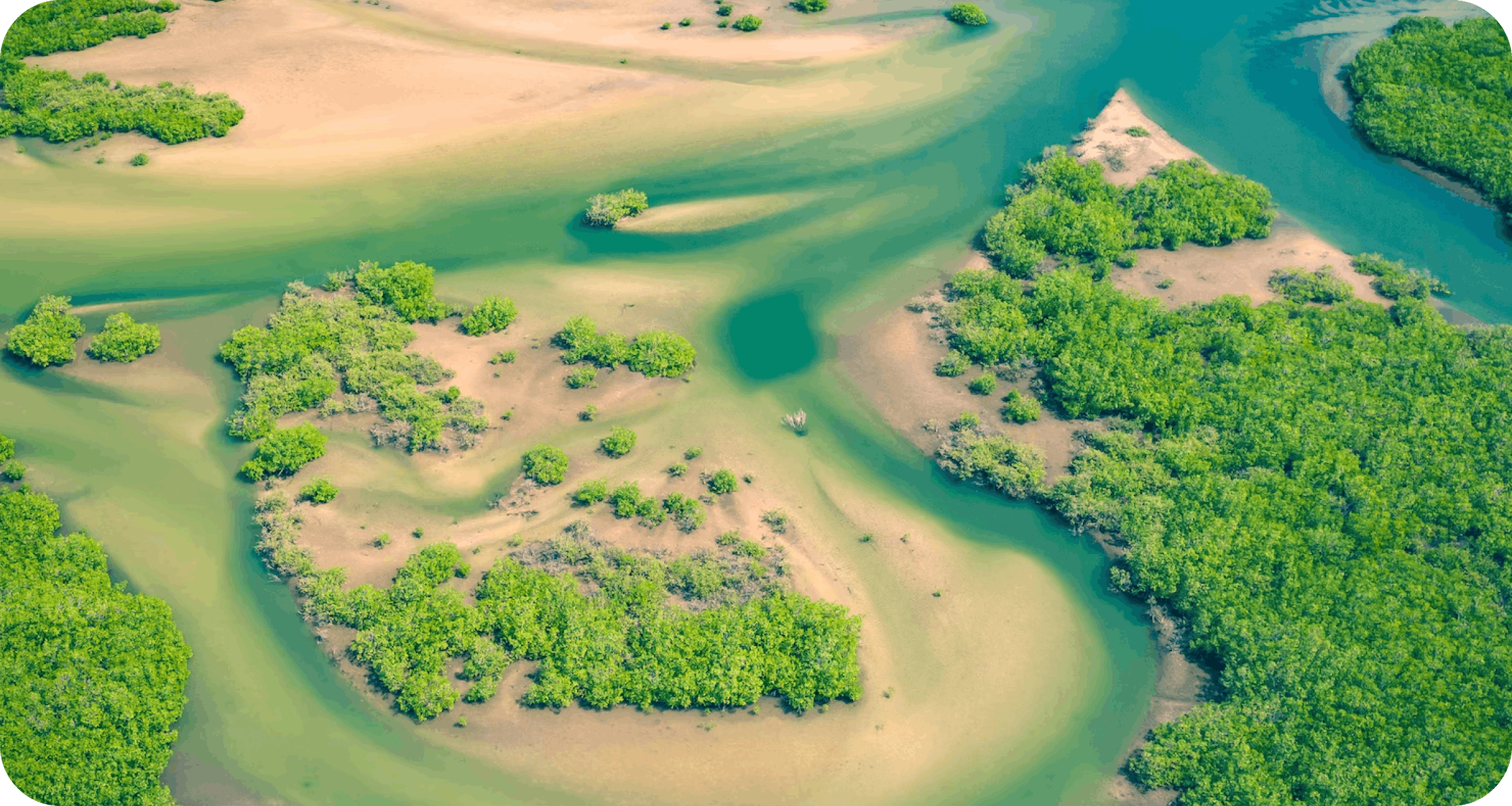
What are mangroves? How do carbon projects involving mangroves work? And how can you tell a credible mangrove carbon project from an untrustworthy one?
With many different types of carbon projects out there, we know it can be overwhelming to understand what they do and evaluate which your company should buy carbon credits from.
To make the process a little easier, we’re publishing a series of explainers on the different project types. So far, we’ve explored afforestation, enhanced weathering, ocean carbon removal, and Direct Air Capture.
Next up: mangroves – featuring Delta Blue Carbon as an example project.
In this article we cover:
- An explanation of mangroves and blue carbon
- How mangrove carbon projects work – protecting, restoring, and planting mangroves
- How to identify high-quality mangrove carbon projects from low-quality
- An example of a credible mangrove project: Delta Blue Carbon
So, what are mangroves?
Mangroves are a type of tree or shrub that live primarily in tropical, coastal wetlands where the land meets the sea, as well as along riverbanks.
They’re one of the only types of tree that can survive being regularly submerged in salt water and in very wet, loose, swamp-like soils. They grow long, dense, twisted roots which hold them upright in the shifting sediment of the wetland.
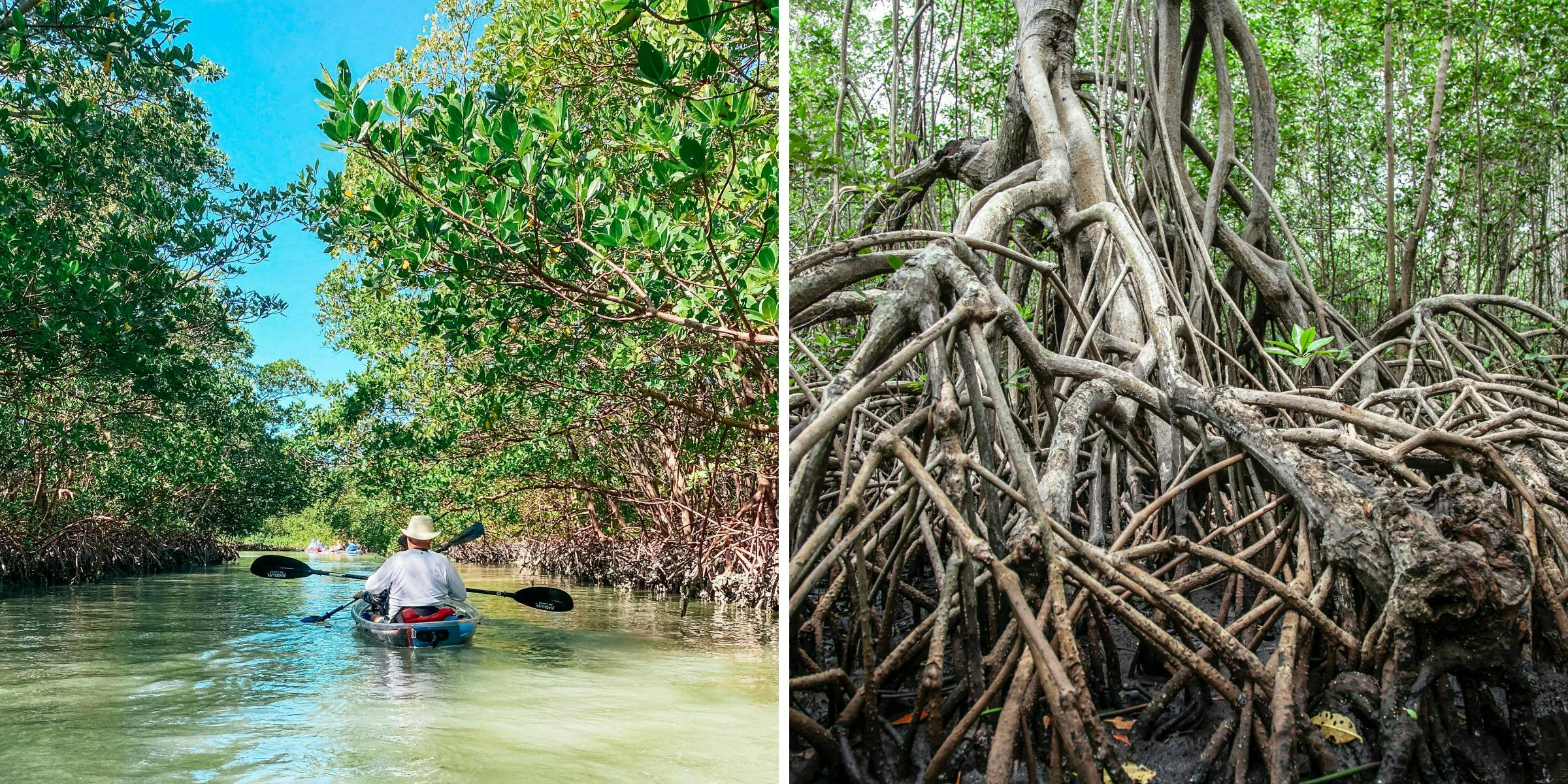
Unfortunately, mangroves are also one of the most threatened ecosystems in nature.
In the last 50 years, we’ve lost 30-50% of the world’s mangroves (Donato et al, 2011). The vast majority of that decline is due to wetlands being converted by humans for use in farming – particularly aquaculture i.e. farming of fish, shellfish, molluscs etc.
It’s vital we protect remaining mangroves.
Why? Three key reasons:
- Mangroves are ecosystems of rich biodiversity
- Mangroves protect coastal communities from floods and natural disasters
- Mangroves remove and store a high amount of carbon – at least 4x more than trees.
The biodiversity of mangroves
Because they’re one of the only plants that can survive in these coastal wetland environments, mangroves are incredibly biodiverse ecosystems – providing shelter for a wealth of both land and water wildlife, many of which are found nowhere else in the world.
Biodiversity (i.e. a wide range of animals and plants existing) is vital for life on earth – enabling the healthy ecosystems that provide us with air to breathe and food to eat.
And the earth’s overall biodiversity is dwindling rapidly – so it’s important that we protect and restore areas of rich biodiversity, like mangrove forests.
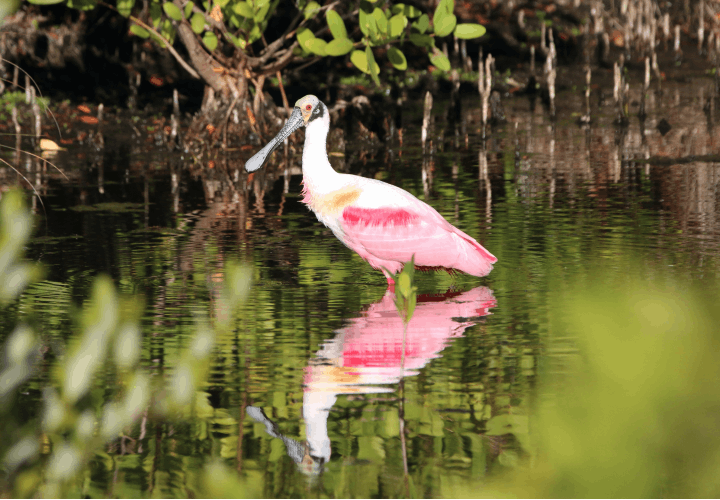
Mangroves as ‘climate guardians’
Mangroves grow on coastlines and riverbanks, creating a barrier between land and water through their dense foliage and substantial root systems.
Through this, mangroves are a natural flood defence system, reducing the risk of flooding and erosion for coastal communities.
And given that coastal communities are also facing rising sea levels and increasing extreme weather due to the impacts of climate change, the coastal defence that mangroves offers will become increasingly crucial for protection.
Mangroves and carbon removal
Mangrove forests remove and store carbon dioxide as they grow and live, making them a vital tool as we work to tackle the climate crisis.
Like trees, as mangroves grow they extract CO₂ from the air and use it to produce oxygen and carbon, through photosynthesis. The carbon they then use to build their leaves, branches, roots, and the mangrove becomes a carbon store. Mangroves are very efficient at this process, absorbing and storing at least four times as much carbon as trees (Donato et al, 2011).
When leaves, branches, or whole mangroves die, they fall to the floor of the wetland. Over time this dropped organic matter accumulates, decomposes, and forms new sediment or soil, taking the carbon with it.
So, the lifecycle of a mangrove effectively buries carbon within wetland soil, where it is stored for even longer. Studies have found that mangroves store carbon in soil for over 5,000 years if left undisturbed (Costa et al, 2022).
This combination of storing carbon in plant and sediment is rare – and makes mangroves a hugely important carbon sink.
Alongside mangroves, both salt marshes and seagrass also remove and store carbon in this way. Together, the three are referred to as blue carbon – referring to carbon removed from the air and stored in biomass and sediment in coastal and marine ecosystems.
To prevent the carbon stored in mangrove forests from being released as carbon emissions (and to maintain biodiversity and coastal defences) we must protect our remaining mangroves.
And, if we can restore and grow new mangroves, they can help us to remove further existing carbon emissions from the atmosphere too.
To enable that, mangrove projects need financing.
Which is where mangrove carbon projects come in.
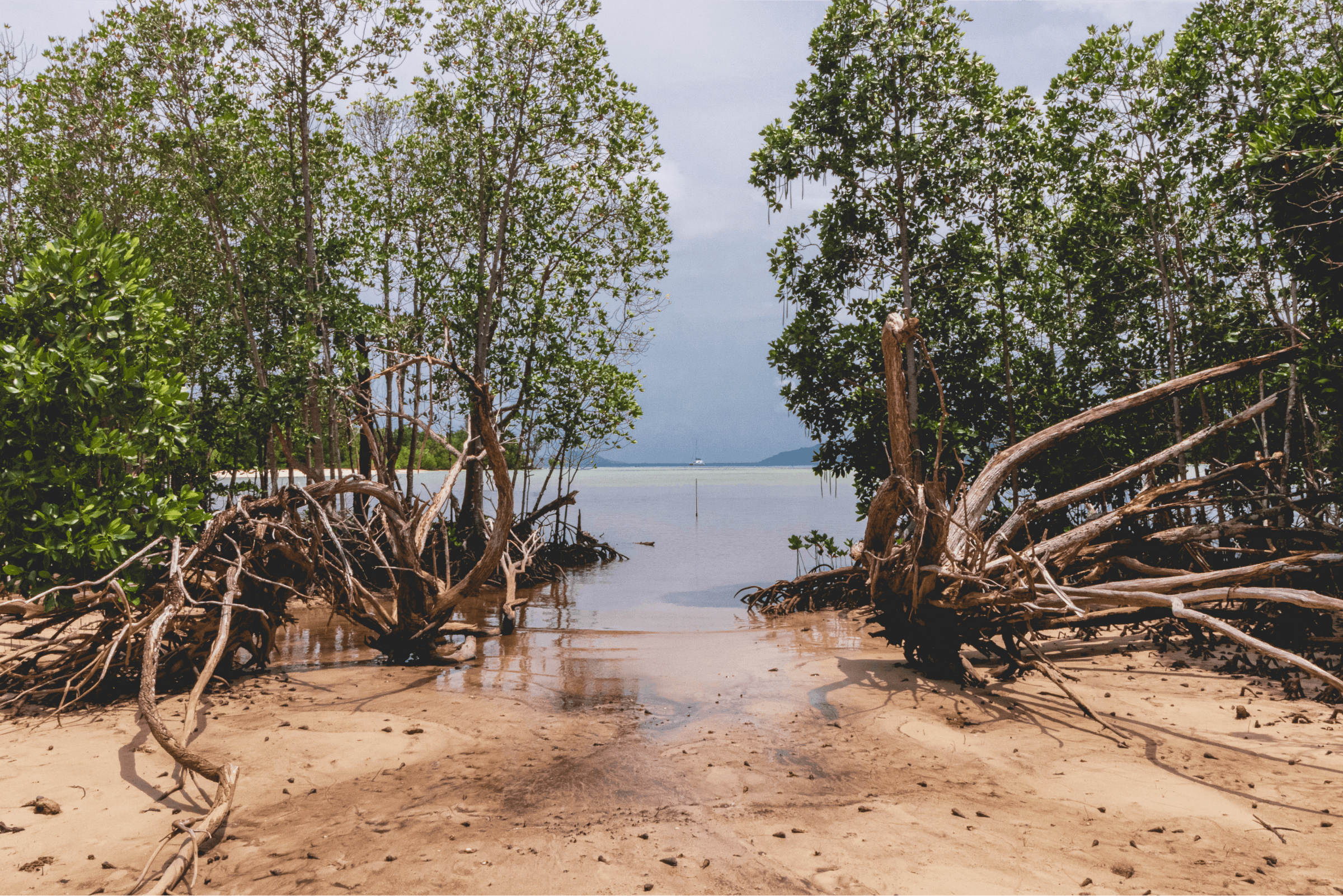
How do mangroves work as a type of carbon project?
How do we ensure that mangroves are protected, restored, and grown? Well, we pay people to protect, restore, and grow mangroves.
Simple!
But where does the money come from?
Mangrove conservation isn’t a profitable activity in its own right, so projects require external funding.
There is some public funding available for mangrove conservation, as governments come to recognise the vital importance of mangrove conservation. For instance, the Indonesian government has set a target of protecting 23 million hectares and rehabilitating 600,000 hectares of mangroves by 2024, and is working with the World Bank to enable this.
But, public funding isn’t available in all countries that have mangrove forests – and even where it is available there’s the risk that changes in leadership could lead to the funding being withdrawn at any point in the future.
In this kind of scenario, carbon finance is a great solution.
Mangrove projects can calculate the carbon benefit produced as a direct result of the project’s lifetime activities – which, for mangrove projects, could be either emissions avoided or carbon removed:
- Emissions avoidance: conservation and protection of existing mangrove forests stops them from being cut down or degraded, therefore preventing carbon from being released into the atmosphere.
- Carbon removal: restoration of degraded mangrove forests or growing new mangrove forests leads to additional carbon emissions being removed from the atmosphere, as the mangroves absorb and store carbon.
The project can then sell a number of ex-ante carbon credits equivalent to their carbon benefit to individuals or businesses who want to buy carbon credits to compensate for their own emissions (or simply to contribute to climate solutions).
And the money gained from the sale of carbon credits is then used to fund the project’s set up and/or ongoing activities to achieve their aims and protect and restore the world’s mangroves.
This is where the voluntary carbon market truly can have a huge, tangible impact – providing a vital stream of finance to projects that are crucial to tackling the climate crisis (and other interconnected issues), and that simply could not exist without this funding.
But, as we well know, this only works when the carbon project is credible and of high-quality.
Unfortunately, there are many low-quality carbon projects out there that use this mechanism of selling carbon credits for financial gain, without actually creating the carbon benefit that they promise to buyers.
So, how can you tell if a mangrove carbon project is credible?
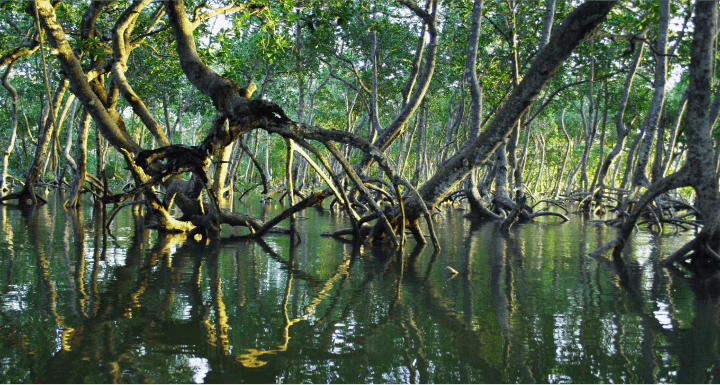
Identifying high-quality, credible mangrove carbon projects
There are a few key markers of quality when it comes to evaluating the credibility of carbon projects, and particularly important for mangrove projects are: accuracy of measurements, durability, additionality, and co-benefits beyond carbon.
When you’re evaluating which mangrove project(s) to buy carbon credits from, you need to be looking for evidence of how the project is approaching these key markers in their methodology and project documentation.
Here’s what to look for in each of these factors.
Accuracy of measurements
It’s vital that this calculation is as accurate as possible and that overestimation of impact is avoided – otherwise buying carbon credits from the project will not have the expected climate impact.
In nature-based projects it’s generally more difficult to be sure of the accuracy of the carbon benefit calculated – the amount of carbon that plants absorb and store can vary a lot across individual plants, and be impacted by many external factors.
For mangroves, this is exacerbated because much of the carbon is stored in soil and sediment below the mangrove and often below water – which is even more difficult to accurately measure and quantify.
To improve accuracy and mitigate risk, in high-quality mangrove projects you can expect to find:
- Combination of in-field data and technology. Confidence in the accuracy of measurements is increased when project’s combine data gathered onsite through e.g. manual sampling to measure mangroves and calculate the carbon stored, with technology such as remote sensing and satellites.
- A robust method for calculating the baseline scenario. To determine a project’s carbon benefit an accurate baseline is needed as a reference point of the carbon emissions and/or storage in the scenario that the project doesn’t exist. This baseline calculation should be regularly reviewed and updated as the project progresses.
- Conservative calculations. As it’s inherently difficult to measure the carbon absorbed and stored in a mangrove forest, even with the most robust and careful calculations there’s still a risk of inaccuracy. So, quality projects will use conservative estimates and/or a buffer pool for unexpected underperformance (typically a minimum 10% buffer is expected) to account for the uncertainty.
- A rigorous ongoing monitoring plan and reporting. Regular ongoing monitoring of the project site is needed to check whether those initial estimates of the project’s carbon benefit are accurate as the project progresses and more data is available. This also enables the project team to constantly improve management practices to maximise benefit. Credible projects will have a clear monitoring plan in place, with regular, publicly available monitoring reports for transparency.
- Independent verification of all of the above. Mangrove and blue carbon projects are a well-established type of carbon project. Therefore, there are existing, third-party approved methodologies for mangrove projects through carbon standards like Verra and Gold Standard. These methodologies include requirements for how projects implement all of the above elements for accurate measurements. High-quality mangrove project should be certified with one of these standards, and aligned with their methodology.

Durability
Mangroves offer short-term carbon storage, because the carbon will eventually be released when the plant dies and/or when the sediment in the forest is disturbed. So, they are generally a less durable or permanent type of carbon project.
However, there are several ways that a mangrove project can maximise its durability to keep the carbon out of the atmosphere for as long as possible – which you’d expect to see from a high-quality project:
- A robust project lifetime. The longer-term the commitment of a carbon project, the better. This is especially true in mangrove projects given that, as we’ve seen, if a mangrove forest is conserved and left undisturbed for a long time then much of the carbon stored within the plants will enter the soil and sediment below, where it can be safely stored for much, much longer – thousands of years instead of decades.

Additionality
Proving additionality – that the carbon benefit produced is above and beyond what would have happened without the project existing – is vital in any credible carbon project.
For mangrove projects, this includes demonstrating:
- There is a robust baseline scenario for comparison. To prove that carbon benefit is additional there should be a clear, evidence-based, third-party checked picture of what was happening in the project area prior to the project, and what would have happened without the project existing. For most mangrove projects, this means proving that the mangroves in the area will be cut down or continue to degrade without a project to protect them.
- Carbon credits are a financial necessity. If other funding streams are available e.g. grant funding or private investment which means the project would have produced the carbon benefit without selling carbon credits, then it is not additional. Credible mangroves projects will be transparent about their funding situation and demonstrate reliance on carbon finance.
- The project goes above and beyond local policy. Some governments are actively putting laws and policies in place to protect mangrove forests. If this is the case for the location of a mangrove carbon project, then the project must be creating carbon benefit which goes above and beyond the policy plans and targets – otherwise the carbon benefit would be created without the project existing.
- Independent verification of all of the above. As with the accuracy of measurements, strict additionality guidelines and tests are included in approved methodologies for mangrove projects – credible mangrove projects should use an approved methodology, and be third-party checked and certified through the carbon standard to prove adherence to this methodology.

Co-benefits beyond carbon
It’s important that projects think holistically about the impact that they create and ensure that local people and the environment as a whole benefit from the project’s existence – removing carbon or avoiding emissions is meaningless if it leads to loss of biodiversity or damages the livelihoods of indigenous communities, for instance.
As we’ve seen, mangrove forests have huge potential to provide co-benefits for people and ecosystems, on top of the carbon benefit they provide.
High-quality, credible mangrove projects will design their methodology to maximise this potential for co-benefits, including:
- Community engagement and involvement. The people living in the project area should be involved and consulted at all stages of a project. Often, they rely on the mangrove forest for food, medicine, income streams etc and so it’s vital that their needs and knowledge are included in the project.
- Creation of alternative livelihoods. Often a major driver of deforestation is to provide income to local people, by converting mangroves into profitable agriculture or aquaculture land. Education programmes to teach local farmers about sustainable land management, as well as the creation of alternative income streams e.g. eco-tourism projects, support the local economy whilst also minimising the risk of mangrove deforestation.
- Community projects. Many projects use funding from carbon credits to implement community projects e.g. construction of local facilities or education scholarships.
- Biodiversity monitoring. Any endangered species in the project area should be carefully monitored, with an aim of protecting their habitats and even seeing an increase in their numbers.
To put this into context, let’s take a look at an example of a trusted, high-quality mangrove carbon project from the Lune library: Delta Blue Carbon.
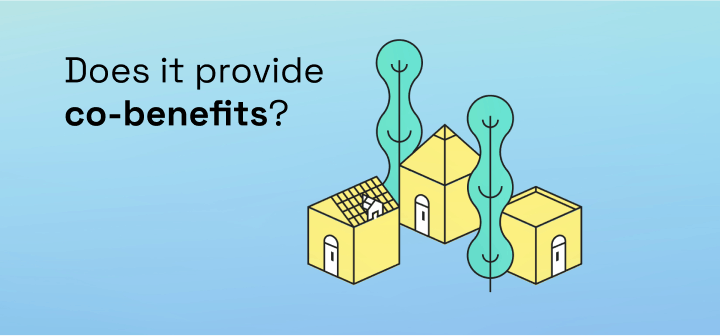
An example of a credible mangrove project: Delta Blue Carbon
The delta of the river Indus is home to over 3,500 km2 of mangrove forest – vital for removing and storing carbon, as well as providing a habitat for many wildlife species.
But, the mangroves were under huge strain due to demand for fuelwood and land conversion for animal grazing, which was leading to large-scale deforestation and degradation of the mangrove forest.
And so, the Delta Blue Carbon project was born in 2015.
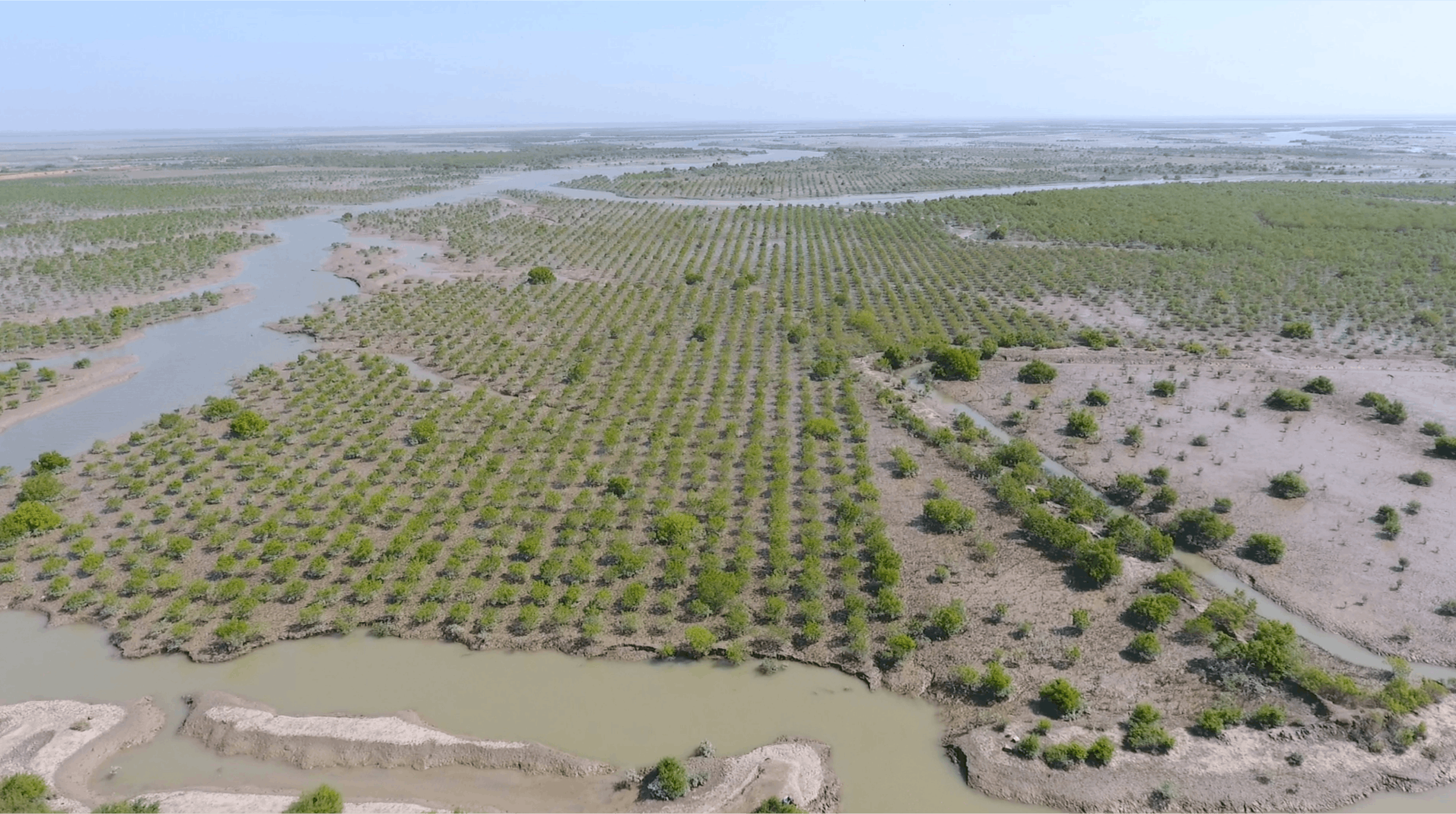 Mangroves in the Indus Delta. Credit: Delta Blue Carbon
Mangroves in the Indus Delta. Credit: Delta Blue CarbonThe project uses funding from the sale of carbon credits to protect and restore the existing mangroves to prevent emissions being released and maximise the carbon removal and storage potential of the mangroves.
On top of this, the project is also planting new mangrove seedlings in carefully managed plant nurseries. Once the seedlings are big enough, they’re then planted out into the existing mangrove ecosystem to increase the forest’s potential.
In terms of carbon benefit, throughout the project’s lifetime 2 million tCO₂ will be removed by the protected mangrove forest every year.
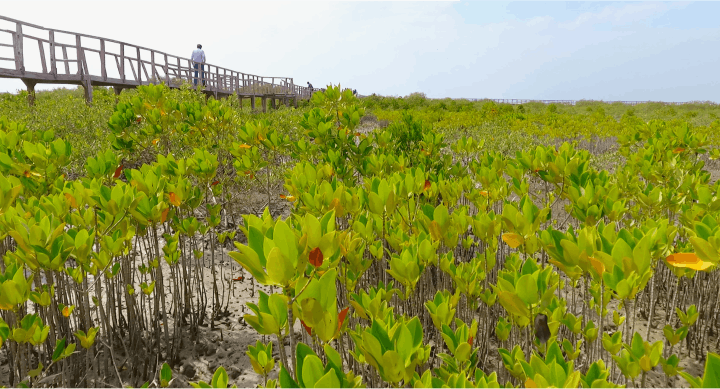 A mangrove nursery. Credit: Delta Blue Carbon
A mangrove nursery. Credit: Delta Blue CarbonSo, how do we know that Delta Blue Carbon is a credible, trustworthy, high-quality mangrove carbon project?
Here’s a few of the key markers of quality in the project:
- Verra certification. Delta Blue Carbon’s methodology has been third-party checked and certified by Verra – giving us confidence in the project’s approach, baseline calculation, impact measurements, and ongoing monitoring, as well as reassurance of no double counting as all carbon credits are issued and managed via the Verra registry.
- 10% buffer contribution. To account for inherent risk and uncertainty in the accuracy of measurements, Delta Blue Carbon also contributes 10% of their carbon credits to a buffer pool for use if there is any unexpected underperformance – in line with Verra’s suggested buffer.
- A robust 60 year lifetime. This is longer than typical projects, and there is also a built in option to extend the project further to a 100-year lifetime.
- Clear financial additionality. There is no alternative funding available to protect the mangroves of the Indus Delta; the project is entirely reliant on the sale of carbon credits.
- Creation of alternative livelihoods in the project area. The project’s methodology includes education and training on mangrove protection and restoration for local people as well as creating new streams of revenue through sustainable farming and fishing – reducing pressure on mangrove harvesting. Over 10,000 job opportunities have so far been created by the project, of a total 21,000 planned.
 Delta Blue Carbon carbon credits shown within the Verra Registry.
Delta Blue Carbon carbon credits shown within the Verra Registry.Plus, as well as the robust and rigorous approach to the carbon benefit of the project, Delta Blue Carbon is creating substantial co-benefits beyond carbon, including:
- Biodiversity monitoring and protection of endangered species. The Indus Delta is one of the 40 most biologically rich regions in the world, home to critically endangered animals such as Indian Ocean humpback dolphins which have increased in population since the beginning of the project
- Providing clean drinking water. The 60 villages within the project area previously did not have a clean, safe, reliable source of drinking water. The project has already installed 5 Reverse Osmosis plants which provide clean, safe water, and more are planned to ensure all residents have access.
- Improving access to healthcare. The local Keti Bundur Health Centre has been renovated, and provided with an ambulance, medical equipment, hospital linen, generator, and new solar power system. Mobile health centres and community health workers have also been funded to ensure healthcare access for all local residents.
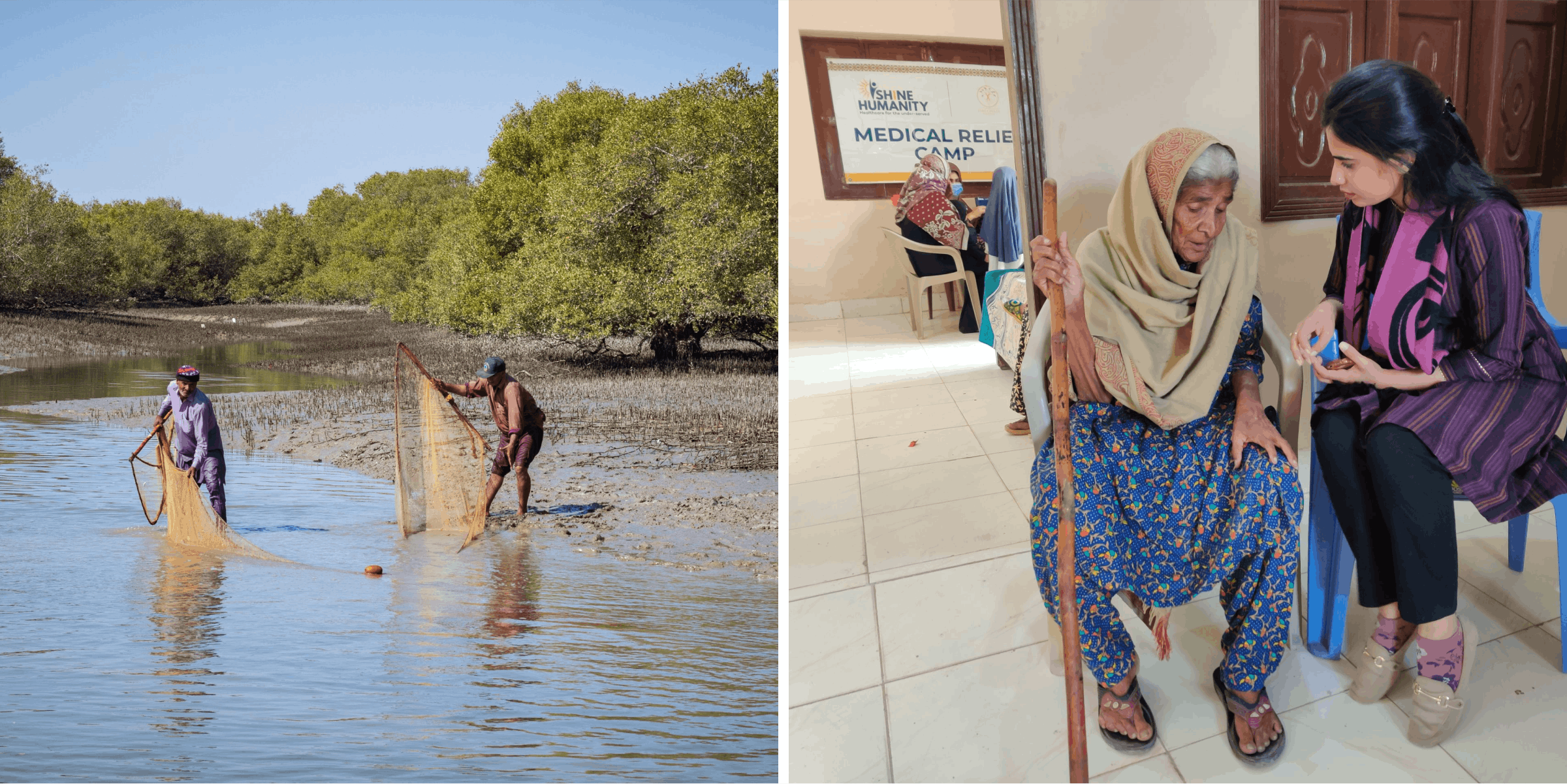 Biodiversity monitoring and medical health camps taking place. Credit: Delta Blue Carbon.
Biodiversity monitoring and medical health camps taking place. Credit: Delta Blue Carbon.Want to support Delta Blue Carbon’s work to protect and restore mangroves in Pakistan?
Sign up or log in to the Lune dashboard to buy carbon credits from Delta Blue Carbon – and to learn more about all of our carbon projects. Or, if you’d like to chat first, get in touch.
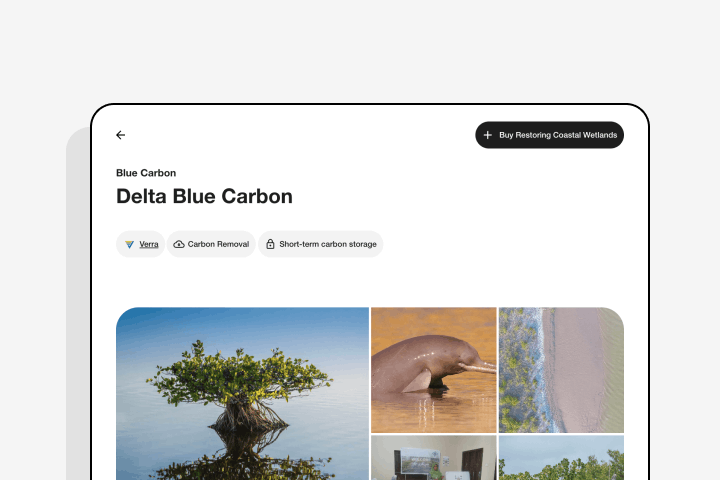 Delta Blue Carbon's project page within the Lune dashboard
Delta Blue Carbon's project page within the Lune dashboardReaders also liked
Readers also liked

Subscribe for emissions intelligence insights
Get the latest updates in the world of carbon tracking, accounting, reporting, and offsetting direct to your inbox.


